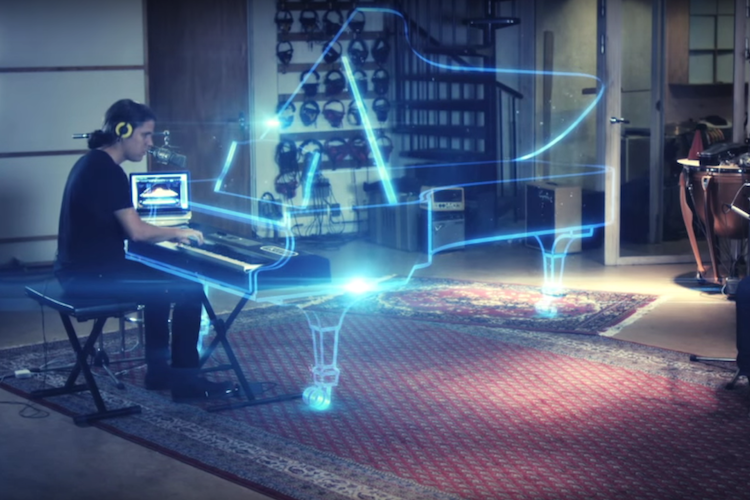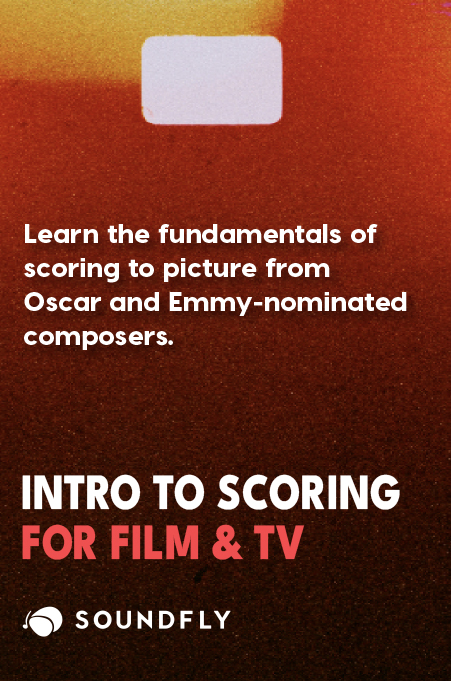
+ Learning to record and mix at home? Check out Soundfly’s acclaimed online courses on mixing, production, and beat making — Subscribe for unlimited access.
In today’s modern production landscape, a musician doesn’t necessarily need an orchestra to write orchestral music; all they need are some good string plugins, right? Well, sort of.
There are tons of excellent natural instrument plug-ins out there, but unfortunately, many of them fall short and end up sounding inauthentic when used to imitate the real thing. And while sometimes you can pull off a digital orchestral backdrop with nifty production chops, sometimes if you have a MIDI instrument that’s meant to mimic a natural sound, it can be better to lean into the electronic side of things, rather than pretend it’s the real instrument.
One thing that always stands out as sounding amateurish or unconvincing is when you hear a song that features an acoustic instrument, such as a grand piano, but it sounds like it’s coming from a cheap electric keyboard. We recognize that the instrument is trying to sound like a piano, but it falls so far short that it just sounds unnatural and stale.
So instead of getting frustrated with that sound not feeling like the real thing, there are ways you can use electronics to lean into that digital sound and make it more interesting. Here’s how.
Making MIDI Instruments Sound More Electronic
Let’s say you have an acoustic guitar MIDI instrument loaded in Ableton Live and you want to write a melody. You might be able to get away with making it sound kind of like an acoustic guitar, but chances are, it will sound off. In this case, try to own the MIDI sound of it; don’t pretend it’s the real thing.
You might start by piling on other digital effects, like delay, reverb, flanger, etc. That way, it sounds a little bit like an acoustic guitar, but no one would be left questioning whether or not it’s electronically generated.
Here’s another example. Let’s say you have a MIDI grand piano melody that you want in your hip-hop beat, but it just sounds too digital, and no matter how much you tweak the nobs, you can’t get it to sound natural. What do you do? In this scenario, we would suggest taking a Lo-Fi approach to the mixing. Cut out all of the high and low frequencies, leave the mid-range exposed, throw on a little bit of overdrive or redux effects, add some reverb, and make it sound faraway.
This way, the digital shortcomings of the piano are hidden, but the ear still recognizes it as a piano. If you kept it clean and tried to fool the ear into believing it was a real piano, it would likely end up sounding bland and amateurish. Again, this won’t be the case with all MIDI grand pianos, because there are some good ones out there, but they’re not all created equal. The listener might even believe you played a real grand piano but just put some Lo-Fi effects on it!
Working With Drum Samples
Just like melodic instruments, the same approach can be applied to drums.
Let’s say you have a drum rack with an acoustic kick drum, acoustic snare, and an acoustic shaker sample. The kick and snare are probably fine on their own, but if you try to make a fast shaker pattern with a one-shot sample, it will have no natural dynamics and sound like it was digitally generated by tapping a button. In this scenario, we would encourage you to use a loop of someone playing a shaker in the BPM of your beat. If the BPM isn’t the same, you can warp the tempo if it isn’t too far of a jump. Too much warping, and you run into the same problem with the rhythm sounding digital. The loop would actually sound real and have human dynamics in it.
On the other hand, let’s say you want to keep the one-shot shaker sample and create a fast pattern; in this case, if you put a ton of reverb and delay on the sample, panned it all the way to one ear, you might end up getting something more unique-sounding even without those human dynamics.
As for drum kits, this is also a common problem, where a producer will use acoustic-sounding drum samples to make a beat as if they’re trying to replicate a live drummer, but all of the samples will sound wrong and all the dynamics will be lost. In this case, it’s more beneficial to either sample a live drummer, or just use more electronic-sounding drums, such as an 808 kit. It is much easier for the ear to accept an electronic beat that is full of 808 samples than an electronic beat that is full of digital acoustic drums that are trying to sound like a live drummer but fall short.
Take a look at hip-hop for example. In most cases, you have one of two types of beats: a sampled beat from a live drummer, or an electronic beat built out of electronic drum samples, like an 808 kit. There isn’t a ton of in between, and that’s because when working with MIDI acoustic instruments in a DAW, you have limited options to actually make them sound natural. That’s why sampling live drummers is so popular in hip-hop, especially in the 90s era. In today’s climate, people tend to use electronic drums more often than not, but there’s still a variety of both going on.
+ Learn production, composition, songwriting, theory, arranging, mixing, and more — whenever you want and wherever you are. Subscribe for unlimited access!
Keeping Natural Instruments Natural
If you’ve got the capability to record musicians who play live instruments, such as violin or saxophone, you have a huge leg up in creating a warm, authentic sound. Now, of course you can use electronic effects to digitally manipulate these sounds as much as you wish, but having real instruments is a huge advantage for producers, and we often recommend keeping them sounding clean.
If you’re working with a cellist for hip-hop beat, you might be able to load a bunch of spatial effects and filters to the track, but if it’s played well, why not leave it predominantly clean? This will give you a leg up on other producers who are using digital cellos that ultimately sound tacky and fake.
As Plug-Ins Become More Natural-Sounding…
If you can successfully replicate an acoustic instrument and make it sound convincing, you should do that and be proud of it. There was a time when that feat seemed impossible, but more and more companies are building excellent MIDI instruments as well as plugins.
Unfortunately, for every great MIDI piano, there are dozens of not-so-great ones that wind up making your music sound unremarkable. If you don’t have the resources to purchase a top-notch library of sounds, but you still want to use your stock MIDI instruments, you can do so — just build your skills in electronic sound manipulation so you’re armed with a solid defence.
And from there, fill in the gap by leaning into those electronic effects in order to blur the inauthenticity of the sound. Your music will sound better for it, and it gives you a chance to become more creative with your mixing production.
Want to get all of Soundfly’s premium online courses for a low monthly cost?
Subscribe to get unlimited access to all of our course content, an invitation to join our members-only Slack community forum, exclusive perks from partner brands, and massive discounts on personalized mentor sessions for guided learning. Learn what you want, whenever you want, with total freedom.




